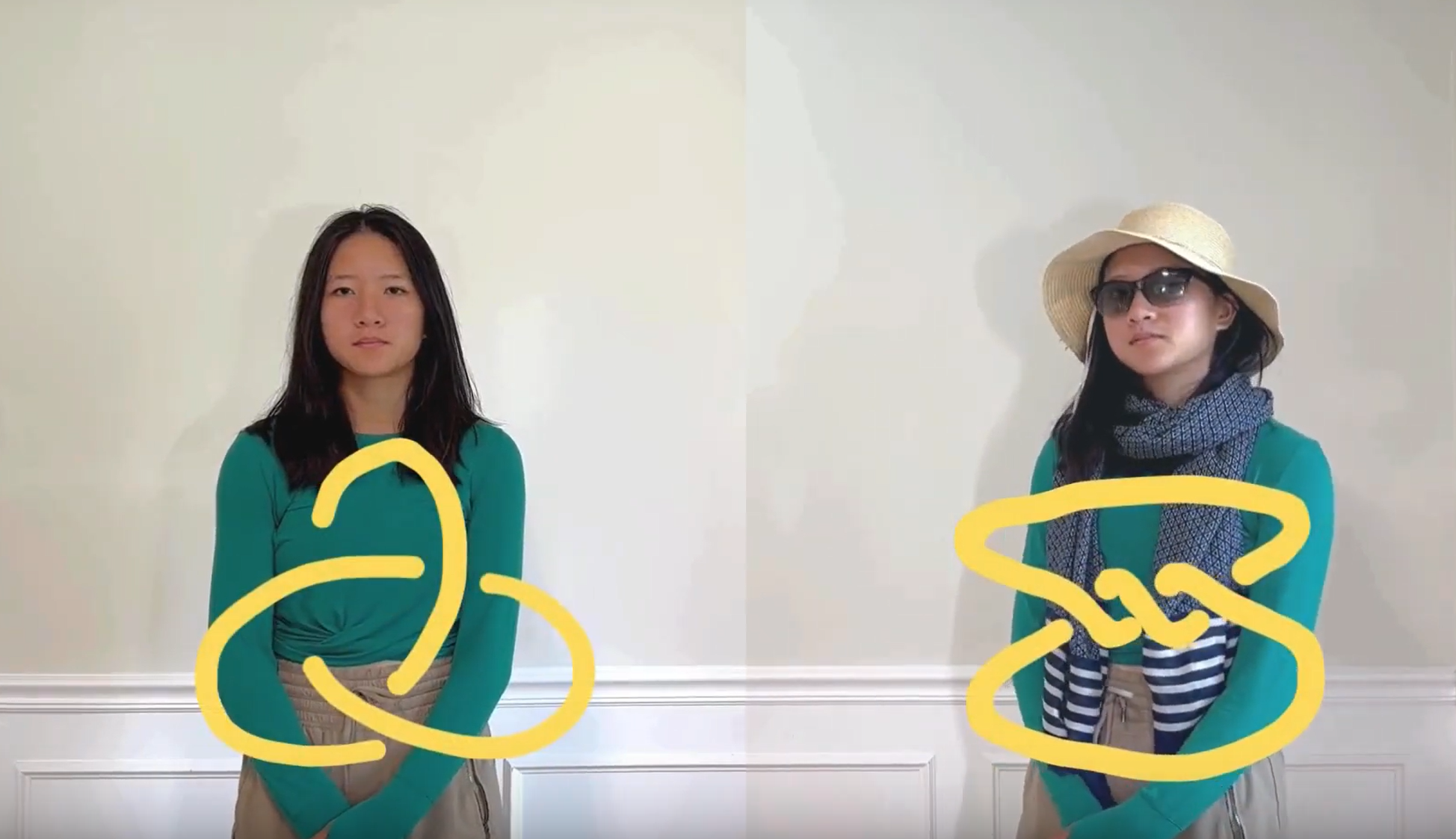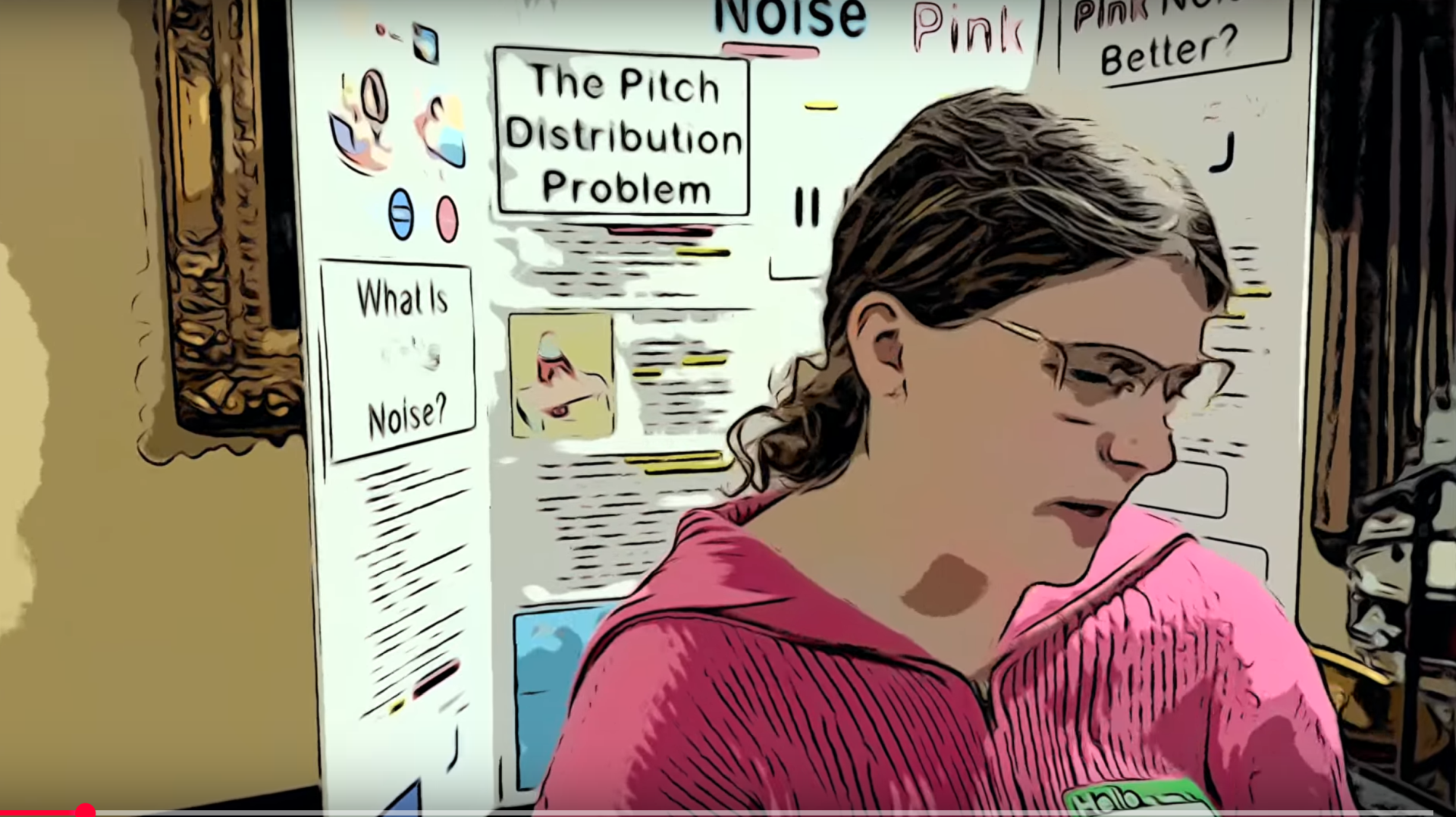Math Monday: A Base Beyond
[sharethis]
One route to mathematical discovery consists in changing the characteristics or parameters of something that is well understood, to see what happens when they vary. For example, we incorporated traps in our binary counter, and those traps allowed for an adjustment of the number of marbles they would store before triggering. Adjusting the trap capacity led to a new mathematical structure — the ternary number system.
In actually building the altered machine, we introduced a new component, the escapement. So now we are in a position to ask: why limit ourselves to just carrying one ball? In fact, James Tanton, and the Global Math Project that he has organized, are asking folks all over the world this month: what might happen if we carried two balls every time one of our place values overflows? (Note that Jim Propp, who we’ll hear more about below, suggested this question to Tanton back in the 1990s.) A very simple modification to our ternary counter/adder will physically illuminate that very question.
Namely, all we need to do is modify each escapement so that it holds two balls, rather than one. That way, when its associated trap triggers, it will release two balls to the next trap. And the required change to the escapement is nearly trivial: just move the stop so that there is room for exactly two balls in the arm of the escapement, as you can see in this shot (note that the tab has been temporarily removed to allow access to the stop).

Except for reweighting the escapements so that they are close to balanced when they are holding two balls, that’s all that has to be done. So here’s a picture of the fully modified counting machine, with all of the carry-marble repositories stocked.

It looks virtually identical to the ternary counter (you can just make out the fact that there are two marbles inside the escapements), yet it’s going to behave rather differently. Let’s see it in action.
What exactly is going on here? Clearly the machine is, in some sense, counting. It enters a different state with each ball added, in terms of how many marbles there are in each of the traps. And none of the states repeat (at least not before the machine overflows on the 24th marble added), so we obtain a different representation for each nonnegative integer. If you replay the video and keep track, you can produce the following table of the representations:
| Number | State | Number | State | |
|---|---|---|---|---|
| 0 | 0 | 12 | 2120 | |
| 1 | 1 | 13 | 2121 | |
| 2 | 2 | 14 | 2122 | |
| 3 | 20 | 15 | 21010 | |
| 4 | 21 | 16 | 21011 | |
| 5 | 22 | 17 | 21012 | |
| 6 | 210 | 18 | 21200 | |
| 7 | 211 | 19 | 21201 | |
| 8 | 212 | 20 | 21202 | |
| 9 | 2100 | 21 | 21220 | |
| 10 | 2101 | 22 | 21221 | |
| 11 | 2102 | 23 | 21222 |
How can we make sense of this new numeral system? Well, what was it that made one ball in the second trap in our ternary counter represent three? It was the fact that for every three balls that went into the first trap, one ball was added to the second trap. Since now two balls are being added to the second trap when this happens, it would seem that perhaps the balls in the second trap are only worth half as much as they were in the ternary counter. In other words, could it be that a ball in the second trap represents 3/2, or one and a half?
Indeed, if you look at the representations above, you see for example that the state corresponding to 4 is “21”. If we interpret that as 2×(3/2) + 1, it comes out correctly to 4!
So what should a marble in the third trap represent? Well, three of the marbles worth 3/2 each, or 9/2 in all, will release two marbles into the third trap, so they should each be worth half of 9/2, or 9/4. Again, this works out with the representations above: 7 is equal to 2×(9/4) + 1×(3/2) + 1.
And notice, not by coincidence, that 9/4 is the square of 3/2. You can verify in the same way that the marbles in the fourth trap are worth the cube of 3/2, or 27/8. Marbles in the fifth trap (the bottommost one in this machine) are worth the fourth power of 3/2, or 81/16. Again, for example, 23 = 2×(81/16) + (27/8) + 2×(9/4) + 2×(3/2) + 2.
In other words, this machine is counting in base 3/2. Weird — it might not even seem like it should be possible to have fractional bases. After all, not every possible numeral in base 3/2 represents a whole number. For example, “11” in this system would mean two and a half, so we will never get to it counting by ones. But the existence of this machine proves, in essence, that there is a numeral for each whole number (you can imagine adding more layers of escapements and traps to handle higher numbers.)
As luck would have it, there is a latin root sesqui- that means precisely “one and a half;” look up the word “sesquicentennial,” for example. Thus, extending our work on the binary and ternary counting/adding machines, we have discoverd the sesquinary number system.
In doing so, we have stumbled onto the edge of some very intriguing and deep mathematics. Notice, for example, that starting with the numeral for three, every sesquinary number starts with the digit 2. And every numeral from six on starts with the digits 21. Do the first three digits ever stabilize in this way, or not? What do you notice about the sequence of digits in the rightmost place as you count? In the second-to-rightmost? Other places? Notice that the last three digits of each of these numerals is different; in other words, you can recognize what positive integer a sesquinary number less than or equal to 21222 represents just from its last three digits, even if the actual numeral has more than three digits. How long does that last? Is there a similar phenomenon with the last four digits?
There are many more patterns to notice and questions to ask about this number system; you can find many more that James Tanton suggests in Part 9 of his course on “Exploding Dots,” or discover your own. (If you read that course, you can interpret what we’ve been doing for the past four weeks as building physical realizations of the exploding dots machines that Tanton uses as thought experiments.) But since this is a column about making actual mathematical machines, I’ll close with a bit more on the sesquinary counter.
You might wonder if it matters what order the traps trigger in this machine or when the marbles are added, for it to count correctly. It turns out, barring any malfunctions, that it doesn’t; you can reason out why if you ponder a bit, or check out Jim Propp’s Mathematical Enchantments for more on this topic. Anyhow, to demonstrate this physically, let’s release 13 marbles simultaneously into the topmost trap, and see what happens:
Voilà, it settles into the state 2121 — the sesquinary representation of 13 — just as it did when we added the marbles one at a time. Notice that to make this work, I had to add a tab to the first trap as well, to prevent an extra marble from sneaking through when the trap dumps three marbles. In fact, since the machine transfers two marbles to the next trap each time it carries, and that trap might already have two marbles in it, the entire machine would work more reliably if all of the traps had a tab on them, making them in essence three-marble escapements as well.
Anyhow, that’s all for this series on mathematical marble machines. If you build your own marble machines, or discover new patterns in sesquinary numbers, let me know about it at whitney@mathmuseum.net. As a parting shot, here’s a picture of a larger-scale sesquinary adding machine that I built for a talk that Jim Propp gave at the last MOVES conference, and which Propp dubbed the SESQUIAC:













